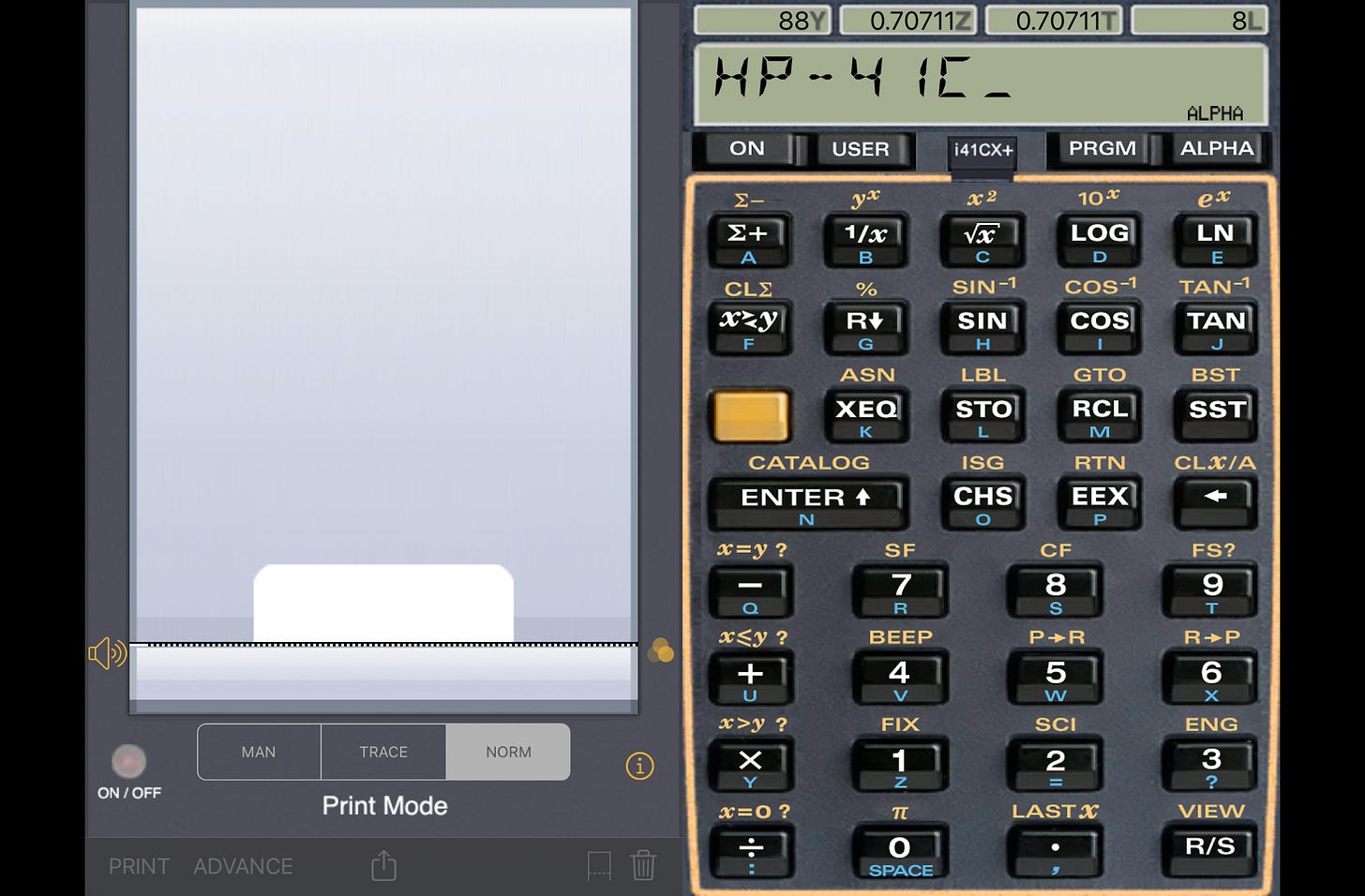Tech Nostalgia: Programmable Calculators
Having fun with early handheld computers
Programmable calculators are (mostly) handheld devices that can automatically run through a sequence of keystrokes. A common use was to program often-used mathematic formulas. For example, calculating the area within a circle typically requires four keystrokes. However, if programmed, the formula can be executed with a single one.
Those calculators also supported conditionals and indirect addressing, which allowed for more complex programs. But, of course, the memory available was tiny compared to today's standards. My first calculator, a Casio FX-501P, offered 128 bytes plus 11 numeric storage slots. But still, limitations inspire creativity, so people have been doing many exciting things with those devices.
The Casio calculators were affordable, but the really cool ones came from Texas Instruments (TI) and Hewlett-Packard (HP). The latter were particularly fascinating because they used RPN, which made it difficult for the uninitiated even to execute the most straightforward calculations.
My uncle, an engineer at an aerospace company, often had the latest HP models at home, for example, the HP-67, which would have been around $2,700 in today's dollars.
This was serious gear used by science, engineering, and construction professionals. But there was also fun to be had: my uncle showed me the first computer game, a variation of the lunar lander, which ran on a 12-digit numerical display.
The HP-67 also famously had three shift keys to cram four functions into every button. The limitation of what the calculator could do was less its computing capacity but available space on the keyboard.
HP solved this problem with the HP-41C(https://en.wikipedia.org/wiki/HP-41C) which sported a 12-character alphanumeric display. This allowed executing functions by their name, so the keyboard size did not restrict the number of available functions. With a customizable keyboard layer and up to four pluggable hardware modules to extend the built-in functionality, The HP-41 came a significant step toward the handheld devices we use today.
Fortunately, you don't need to spend a fortune on eBay to get your hands on some computer history because there are plenty of emulations available: Here are a few calculator apps that I downloaded for iOS:
Legendary 67: HP-67 emulation, including the built-in magnetic card reader.
i41CX: a faithful emulation of the HP-41C calculators with interesting extensions and a virtual printer.
HP-48: An emulation of the HP-48, the first HP graphic calculator.
Halcyon Calc/Halcyon Lite: A calculator inspired by the HP-28, which featured symbolic algebra. Halcyon takes the original user experience and modernizes it for the touchscreen, making this a serious contemporary calculator.
FX-602 Sim: This is an emulation of the Casio FX-602P, the successor of my first programmable calculator FX-501P with more memory and an alphanumeric dot-matrix display.
SwissMicros: If software emulations don't do it for you, SwissMicros sells classic HP calculators like the HP-41C running on updated hardware for good money.
Even though I rarely need to do complex math, playing occasionally around with one of those classics gives me a jolt of joyful nostalgia. After all, this is how my journey into computer technology started.
